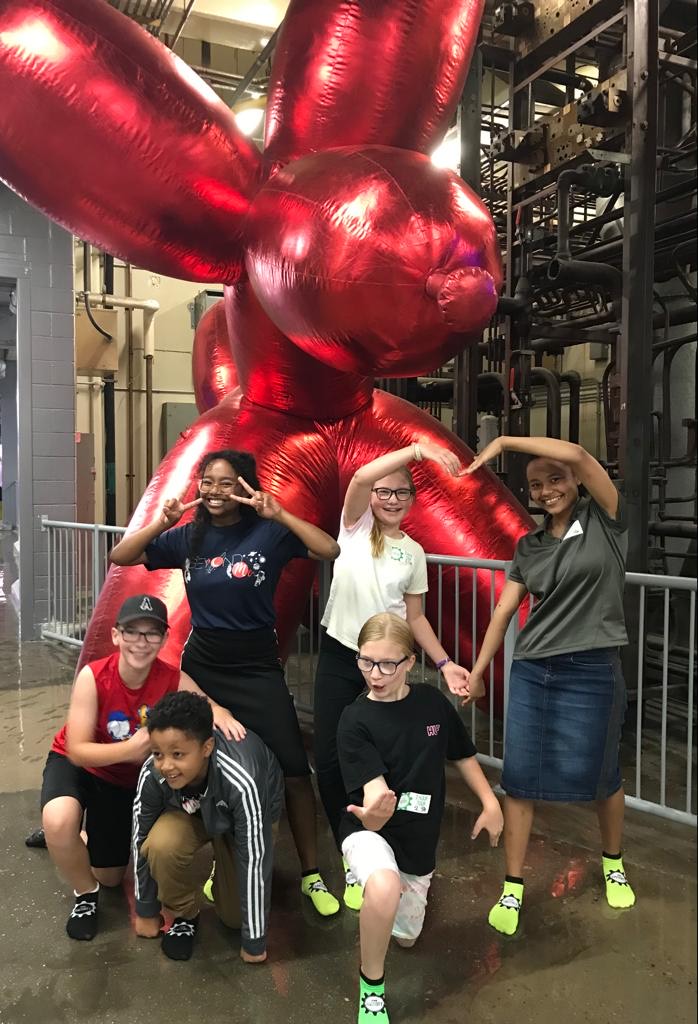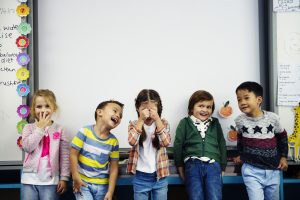Chapter 1: What Influences Our Personality?

Warm Up Questions
- What are the things that influenced you most when you were growing up?
- Was there a person who influenced you when you were young?
- In what ways did these things or people influence you?
Key Terms
hidden curriculum
the informal teaching done in schools that socializes children to societal expectations
peer group
a group made up of people who are similar in age and social status and who share interests
socialization
the process wherein people come to understand societal expectations, to accept society’s beliefs, and to be aware of societal values
Reading
Social Groups – Family
1. Family is the first agent of socialization as they communicate expectations and reinforce societal norms. Mothers and fathers, siblings, and grandparents, plus members of an extended family, all teach a child what he or she needs to know. Many social factors affect the way a family raises its children. For example, individual behaviours are affected by the historical period in which they take place. Sixty years ago, it would not have been considered especially strict for a father to hit his son with a wooden spoon or a belt if he misbehaved, but today that same action might be considered child abuse.
2. Sociologists recognize that race, social class, religion, and other societal factors play an important role in socialization. For example, poor families usually emphasize obedience and conformity when raising their children, while wealthy families emphasize judgment and creativity (National Opinion Research Center, 2008). This may happen because parents focus on characteristics that are helpful in their own jobs and means that children are effectively socialized to take the types of jobs their parents already have, thus reproducing the class system (Kohn, 1977).
3. Likewise, children are socialized to abide by gender norms, perceptions of race, and class-related behaviours related to their culture. In Sweden, for instance, there is a trend for fathers to stay at home and they have become an accepted part of the social landscape. A government policy provides subsidized time off work with the choice of paid leave being shared between mothers and fathers. How do U.S. policies—and our society’s expected gender roles—compare?
Social Groups – Peers
4. A peer group is made up of people who are similar in age and social status and who share interests. Peer group socialization begins in the earliest years, such as when kids on a playground teach younger children the norms about taking turns, the rules of a game, or how to shoot a basket. As children grow into teenagers, this process continues. Peer groups are important to adolescents in a new way, as they begin to develop an identity separate from their parents and exert independence. Additionally, as children’s priorities change, peer groups provide their own opportunities for socialization since kids usually engage in different types of activities with their peers than they do with their families. Peer groups provide adolescents’ first major socialization experience outside of their families.

Institutional – School
5. The social institutions of our culture also inform our socialization by teaching people how to behave in and navigate these systems. For example, most U.S. children spend about seven hours a day, 180 days a year, in school, which makes it hard to deny the importance school has on their socialization (National Center for Education Statistics, 2004). Students are not in school only to study math, reading, science, and other subjects. Schools also serve a function in society by socializing children into behaviours like practicing teamwork, following a schedule, and using textbooks.
6. School and classroom rituals, led by teachers serving as role models and leaders, regularly reinforce what society expects from children. Sociologists describe this aspect of schools as the hidden curriculum, the informal teaching done by schools. For example, in the United States, schools have built a sense of competition in the way grades are awarded and the way teachers evaluate students (Bowles & Gintis, 1976). When children participate in a relay race or a math contest, they learn there are winners and losers in society. When children are required to work together on a project, they practice teamwork with other people in cooperative situations. The hidden curriculum prepares children for the adult world and affects their attitudes toward many areas of society. Schools in different cultures socialize children differently in order to prepare them to function well in those cultures.
Institutional – The Workplace
7. Just as children spend much of their day at school, many U.S. adults at some point invest a significant amount of time at a place of employment. Although socialized into their culture since birth, workers require new socialization in a workplace, in terms of both material culture (such as how to operate the copy machine) and nonmaterial culture (such as whether it’s okay to speak directly to the boss or how to share the refrigerator).
Institutional – Religion
8. Religion is an important avenue of socialization for many people. The United States is full of synagogues, temples, churches, mosques, and similar religious communities where people gather to worship and learn. Like other institutions, these places teach participants how to interact with the religion’s material culture (like a mezuzah, a prayer rug, or a communion wafer). For some people, important ceremonies related to family structure—like marriage and birth—are connected to religious celebrations. Many religious institutions also uphold gender norms and contribute to their enforcement through socialization.
Institutional – Government
9. Although we do not think about it, many of the rites of passage people go through today are based on age norms established by the government. To be defined as an “adult” usually means being eighteen years old, the age at which a person becomes legally responsible for him- or herself. And sixty-five years old is the start of “old age” since most people become eligible for senior benefits at that point. Each time we embark on one of these new categories—senior, adult, taxpayer—we must be socialized into our new role.
Institutional – Mass Media
10. Mass media distribute impersonal information to a wide audience, via television, newspapers, radio, and the internet. With the average person spending over four hours a day in front of the television (and children averaging even more screen time), media greatly influences social expectations (Roberts et al., 2005). People learn about objects of material culture (like new technology and transportation options), as well as nonmaterial culture—what is true (beliefs), what is important (values), and what is expected (norms).
(973 words)
Comprehension Questions
- What are two types of social groups that influence our socialization?
- Describe two examples of how family influences a child’s social development.
- Describe two ways that peers influence children’s development socially.
- What are three examples of institutional influences on social development?
- Choose one institutional agent and describe how it impacts social development.
Key Vocabulary
affect
attitude
conformity
contribute
cooperative
deny
distribute
emphasize
establish
evaluate
factor
function
gender
interact
media
norm
perception
priority
process
reinforce
significant
status
subsidize
trend
Vocabulary Practice
Chapter References
Bowles, S. & Gintis, H. (1976). Schooling in capitalistic America: Educational reforms and the contradictions of economic life. Basic Books.
Kohn, M.L. (1977). Class and conformity: A study in values. Dorsey Press.
National Center for Education Statistics. (2004). Average length of school year and average length of school day, by selected characteristics: United States, 2003-04. Private School Universe Survey. U.S. Department of Education. Retrieved July 30, 2011 from http://nces.ed.gov/surveys/pss/tables/table_2004_06.asp
National Opinion Research Center. (2007). General social surveys, 1972–2006: Cumulative codebook. Chicago: National Opinion Research Center.
Roberts, D.F., Foehr, U.G. & Rideout, V. (2005). “Parents, children, and media: A Kaiser Family Foundation survey. The Henry J. Kaiser Family Foundation. Retrieved February 14, 2012, from http://www.kff.org/entmedia/upload/7638.pdf
This reading was adapted from Alapo, R. (2022). Chapter 3: Socialization across cultures. In Diversity and multicultural education in the 21st Century. CUNY Pressbooks Network. CC BY-NC-SA. Adaptations include condensing material, reorganizing paragraphs, and creating comprehension questions.

